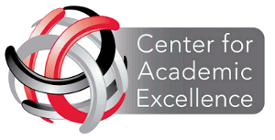Visual Listening: Listening With One's Eyes
Location
DSB, Room 105
Start Date
31-5-2013 10:30 AM
End Date
31-5-2013 11:45 AM
Session Type
Interactive Session
Description
At the Eleventh Annual Summer Conference – Innovative Pedagogy & Course Redesign – at Fairfield University, 2011, we presented a session on Active Productive Listening. Since that time our interest in the role of listening as a key component of critical thinking pedagogy has evolved into an interactive workshop with students and faculty at Southern Connecticut State University (November 2011) entitled Listening as a Precondition to Critical Thinking, surveys of over 250 students regarding their desire or ability to listen in the classroom, a paper The Role of Active Productive Listening in Communication, Pedagogy, and Thinking Critically published in the Journal of Business Management and Change, and a presentation at the International Higher Education Teaching and Learning Conference (January 2013) entitled In One Eye and Out the Other. As our listening research continues we realize that in today’s world students learn visually as well as aurally. Students learn from “visual listening” – listening related to reading texts, emails, and tweets. They are “listening” to conversations "visually" with their eyes. This presentation discusses our findings on student learning – listening and “visual listening” in order to think critically and explores the need to capture this unique way of “listening” and incorporate it into teaching students to think critically. Participants will an opportunity to experience various interactive aspects of the presentation during our session.
Topic Designation
Teaching & Learning
Presenter Bio(s)
Margaret A. Goralski (margaret.goralski@quinnipiac.edu)
Goralski is a professor in the School of Business at Quinnipiac University. She has a Ph.D. in International Management from the International School of Management, Paris, France. Her current research interests, among others, include brain-based learning, active productive listening and "visual listening" as a basis for critical thinking, development of robust improvement strategies to eliminate the unanticipated side effects of international business, and transformational challenges the world poses for international corporations.
Krystyna Gorniak-Kocikowska (gorniakk1@southernct.edu)
Gorniak-Kocikowska is a professor of Philosophy at Southern Connecticut State University. She has a Ph.D. in Philosophy from Adam Mickiewicz University in Poznan, Poland. Her current research interests include, among others, philosophy of education, knowledge management, social and ethical issues in the ICT-driven global society.
Visual Listening: Listening With One's Eyes
DSB, Room 105
At the Eleventh Annual Summer Conference – Innovative Pedagogy & Course Redesign – at Fairfield University, 2011, we presented a session on Active Productive Listening. Since that time our interest in the role of listening as a key component of critical thinking pedagogy has evolved into an interactive workshop with students and faculty at Southern Connecticut State University (November 2011) entitled Listening as a Precondition to Critical Thinking, surveys of over 250 students regarding their desire or ability to listen in the classroom, a paper The Role of Active Productive Listening in Communication, Pedagogy, and Thinking Critically published in the Journal of Business Management and Change, and a presentation at the International Higher Education Teaching and Learning Conference (January 2013) entitled In One Eye and Out the Other. As our listening research continues we realize that in today’s world students learn visually as well as aurally. Students learn from “visual listening” – listening related to reading texts, emails, and tweets. They are “listening” to conversations "visually" with their eyes. This presentation discusses our findings on student learning – listening and “visual listening” in order to think critically and explores the need to capture this unique way of “listening” and incorporate it into teaching students to think critically. Participants will an opportunity to experience various interactive aspects of the presentation during our session.


